While we might think twice about trying to explain astrophysics or the global financial system to a child, kids are capable of understanding some ideas that encompass the entire world in scope – climate change, for example. And by teaching kids about climate change, I’m not referring to the rather handwave-y “reduce, reuse, recycle!” messages we got for a while in school. More and more younger people are learning about the incoming climate disaster that will affect the least privileged of humanity first and can only be salvaged if current leadership is tossed out and massive, systemic changes are made. Greta Thunberg comes to mind as a good example of this recent movement of kids really waking up and learning about complex global issues (out of necessity, sadly).
Ok, so what the hell does this have to do with a Kirby game on the Nintendo 64? I bring up complex global issues, climate disaster, and media teaching kids, because I believe Kirby 64: The Crystal Shards features elements of this in one of its worlds. Specifically, I’m referring to World #5 of 7 – Shiver Star.
Upon viewing the planetoid on the world select screen, you see a very muted, light gray planet. Closer inspection of the planet shows it bears a striking resemblance to our planet Earth, albeit much grayer and murkier.
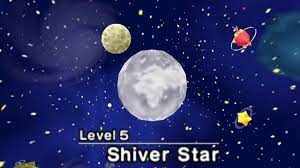
The first two levels of this world play out normally with the usual Kirby fluff. Once you enter the third level, things start to feel a little off, but the jolly music continues. A discerning eye might have noticed that it resembles a colorful version of a sprawling shopping mall. Things change more when you enter the fourth level, which starts with you jumping down a factory’s secret entrance.
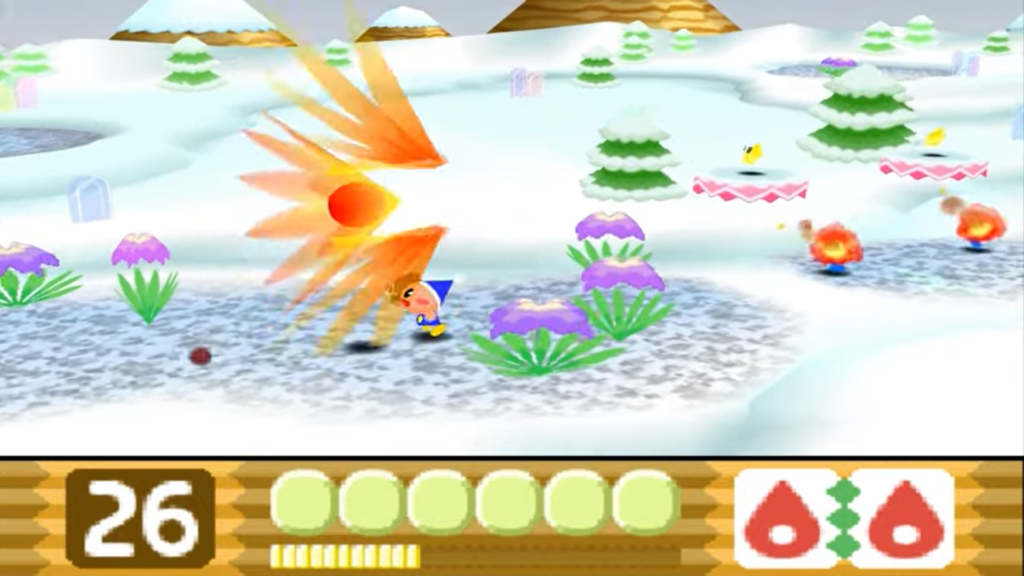
The music immediately changes from the cheerful track that played for the first three stages of Shiver Star. Instead of being jolly and upbeat, the music is somber and haunted, peppered with the sounds of hammers, metal, and other off-putting synthetic sounds. Here, you scramble to make your way through a very industrial-themed level, where there are spinning gears, rotating conveyor belts, and electrical contraptions at work everywhere.

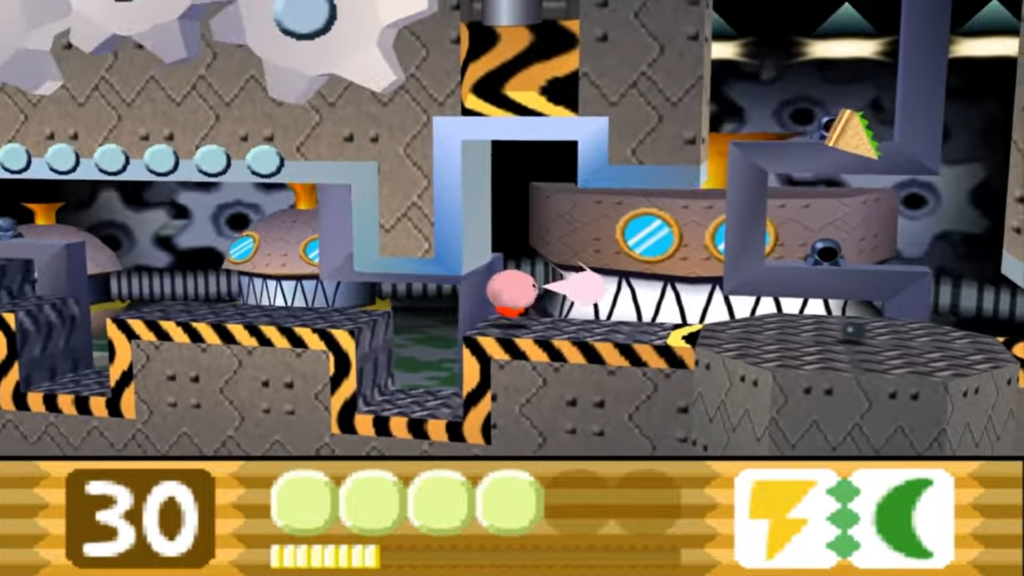

There’s a conveyor belt with giant hammer-swinging machines with maniacal grins on their faces, trembling with glee before they attempt to turn you into mush. There’s a room whose wall is lined with tubes with living creatures trapped in them. Shiver Star’s final boss is a battle against a giant, faceless, and heavily armed robot in front of a dark and very muted cityscape.
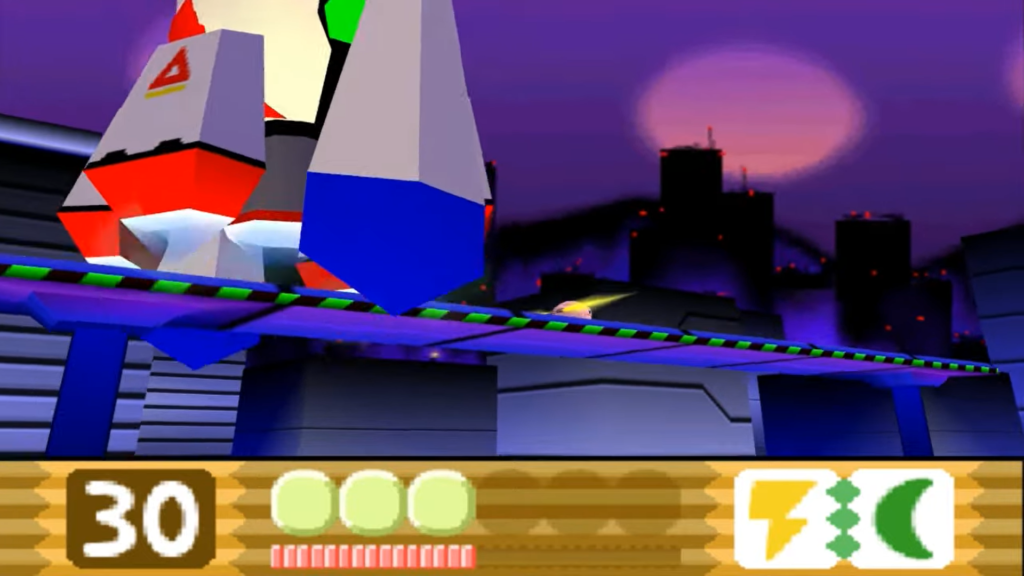
The facade set up by the first three levels is finally broken, and you uncover exactly what has been sapping the life out of the planet at the very core. At first, you might think the culprits are the robots themselves. Maybe they followed the often feared science fiction trope of killing their creators and taking over the planet. Based on the imagery used and how the very level itself is trying to kill you, that would make sense initially. At the same time, however, none of the robots are going out of their way to do that. They are performing set, repetitive tasks and not straying from their firmly established paths – they’re just doing their jobs.
This, along with the dead cityscape in the background of the boss fight and the striking similarity of Shiver Star to Earth, lead me to believe that the implied culprit here is whoever created the robots – humans. This is a clear allegory about the endless growth of industrialization and production that are exploiting the living bodies on the planet and causing it to die a slow, winter-y death. Even as the planet’s residents are all gone, the factories continue to churn and produce.
While a slowly freezing Earth is the opposite of our own planet getting hotter, this case can probably be attributed to artistic license – it might have been assumed that kids would have an easier time understanding the immediate impact of a cold and lifeless world over one that is gradually getting hotter. The Japanese website for the game also mentions that all of the planet’s residents moved away because it was too cold – hopefully all means all, and not just the rich ones!
All this isn’t to say that Kirby 64 is some underrated masterpiece because of a deep lesson it teaches to kids in one of its worlds. But, I do find it cool that a Kirby game developed mainly with kids in mind did sneak in a half-obscure allegory about climate devastation.
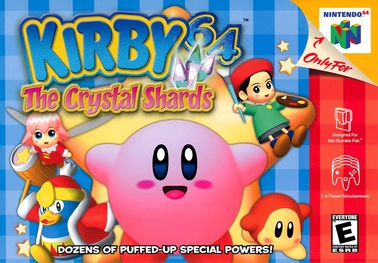

Oh my god I remember learning about this years ago when watching a video about “sPoOkY” video game facts. I think you pointed out some really interesting characteristics of the game, like how the exterior section of the level is so different from the interior factory level. In my opinion, what makes this level so interesting is the fact that it’s so out of place within the game, and that the player receives such little explanation about it – something that’s pretty common when creating horror media! It’s understandable that the level feels eerie and unsettling – it’s drawing on media rhetoric that is designed to do just that. The horror level of Kirby!
Yeah, I think a large part of what contributed to this level gaining notoriety over time is the fact that no explanation is given for it. For most players, Kirby waddles through some wintery scenes, waltzes through a somewhat creepy factory, beats up a giant robot and then continues on his way. This is actually a bit of a running theme throughout the mainline Kirby games over the years.
For whatever reason, Kirby games often undergo wild shifts in tone for parts of the adventure and stuff in horror elements here and there. What starts out as a colorful romp through grassy fields and cute foes ends with a battle against some world-ending, demonic being, sometimes even with very graphic imagery. Kirby 64 itself actually has another good example! If you don’t care about spoilers, feel free to look up the final boss of Kirby 64 to see what I mean. In an otherwise mostly colorful game series that is primarily designed for younger audiences, creepy and horrific stuff is inexplicably tossed in. To this day, it goes mostly unexplained why the creators of Kirby games repeatedly do stuff like this, and I think that’s why it stands out.